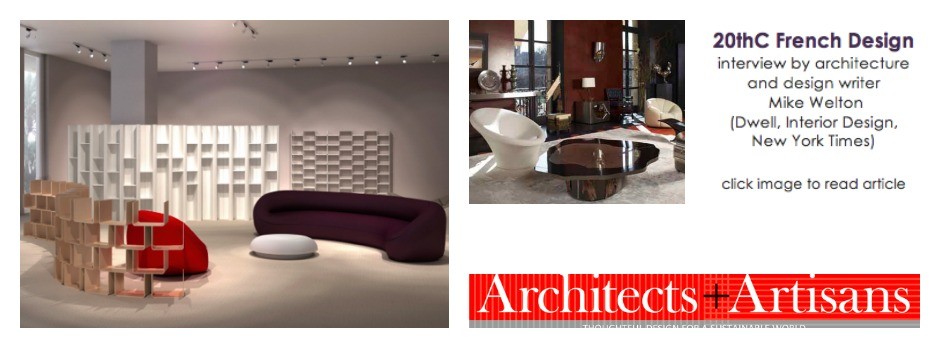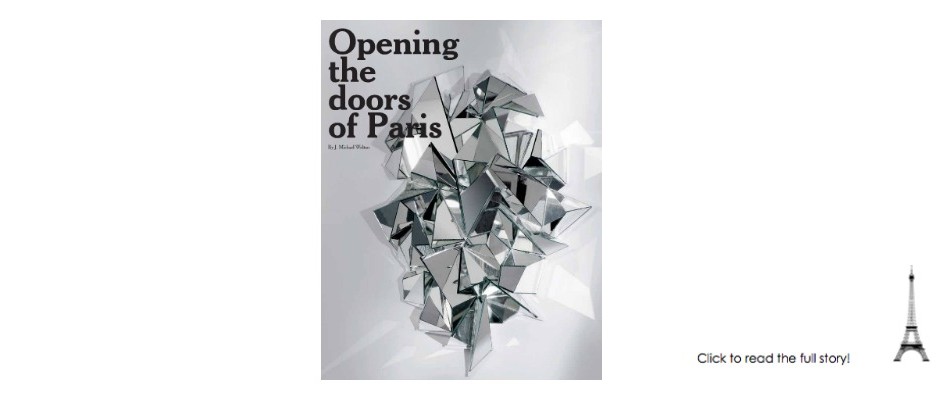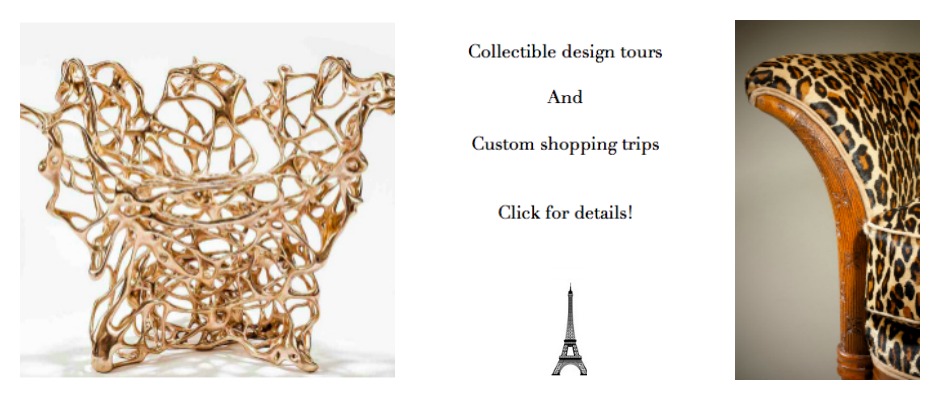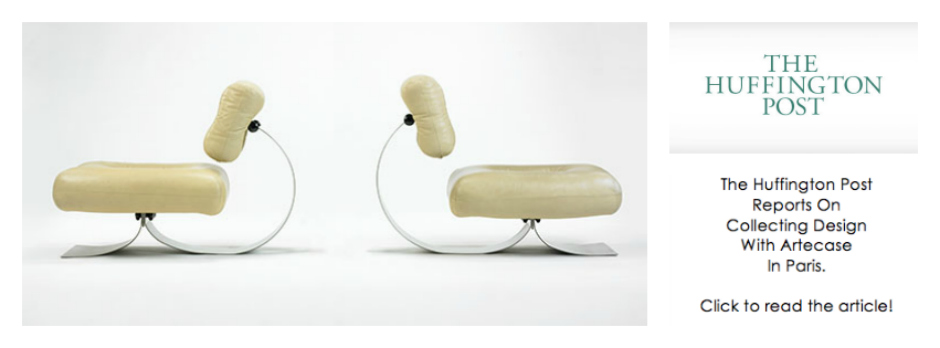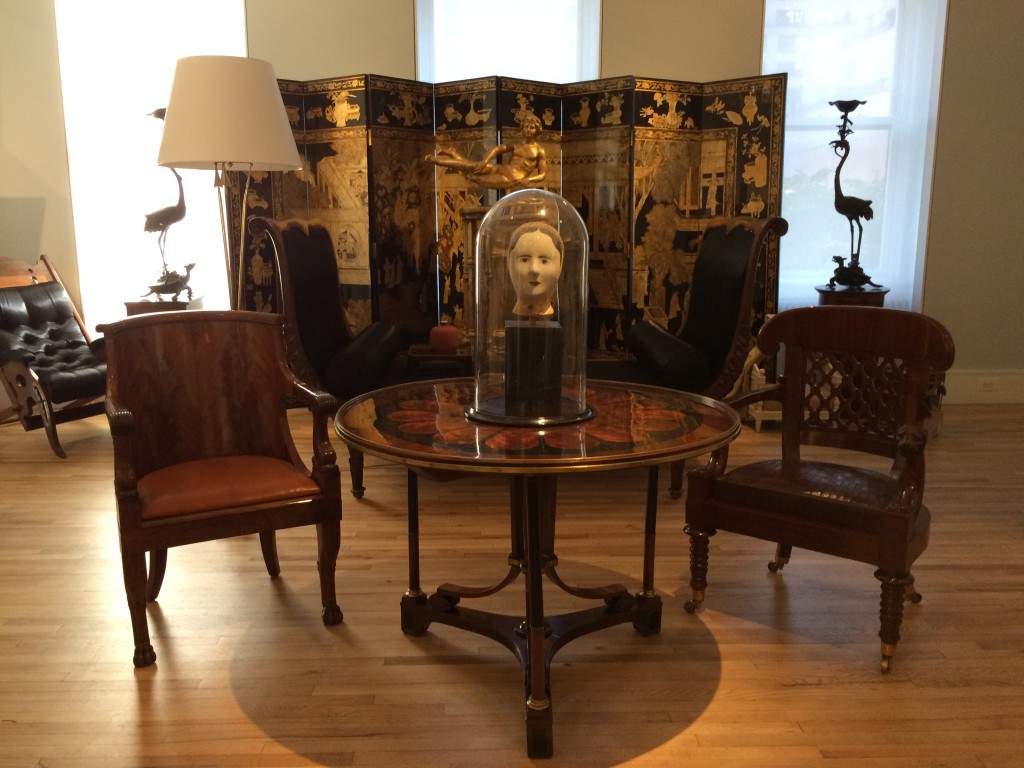Interior of the new combined 59th street gallery. Photo courtesy of R. Louis Bofferding.
R. Louis Bofferding and the Chinese Porcelain Company are now together under one roof on 59th Street in New York. Here Bofferding shares his passion and his insight in this generous and extensive interview.
- Why and when did you switch from dealing in contemporary art to decorative art ?
It wasn’t exactly a switch, since I was winding down as a contemporary art dealer in 1988, and didn’t start dealing in the decorative arts until 1994. In between I lived extravagantly, squandering the money I’d made in the boom years, but I can’t say I regret it. Anyway, I distanced myself from the art world because the escalating hype made it increasingly difficult to figure out what I believed in and didn’t.
In the 1980s and early 90s I was buying furniture for my apartment, which included Italian 18th-century things, Jean-Michel Frank, and Jasper Morrison. But I didn’t think of dealing in it until one day in 1993 in Naples when I found myself leaving the Capodimonte museum. I was traveling in Italy looking at Baroque painting, and saved this superb collection for last. But I spent the entire day looking at the furniture. I flew to Paris that evening, and went to dinner that night with Pierre Le-Tan, the artist and collector. I threw out, almost as a dare, the idea I’d hatched on the plane of becoming an antiques dealer. Pierre, who knows me well, approved. The rest, you might say, is history.
2. In what periods/materials do you specialize or have the greatest passion for in decorative arts?
I’m a generalist, not a specialist. I like what’s best of kind and unusual. I don’t favor an ormolu-mounted commode over a painted provincial one, or one in Perspex from the 1970s. That said, my areas of expertise include European furniture from the 17th to the 19th century, Western furniture from the 1920s to the ‘40s, and furniture designed by, made for, or passed through the hands of significant 20th-century interior designers, like Jean-Michel Frank, Georges Geffroy, and Billy Baldwin. My take is very personal. Quite frankly, I think masterpiece collections make a home look institutional – they’re better when cut with approachable works by petites maîtres.
As for materials, I love objects made from precious ones – ebony, ivory, coral, rock crystal, mother-of-pearl, lacquer, and silk-velvet. But they look best when offset by humble oak, cotton upholstery, and paper lampshades.
Interior of the new combined 59th street gallery. Photo courtesy of R. Louis Bofferding.
3. How has the market in your field changed since you started dealing? Perhaps you could name three things that were popular purchases when you started and three objects that people like to collect now ?
These days you can’t give away 18th-century French, or brown English furniture. And the hardstone objects – like rock crystal and porphyry – which were the status symbols of kings and popes, are relatively affordable now. Today people want mid-century modern, and contemporary artist-designed furniture. I like that too, but let’s face it, the old things are now undervalued, new things are overvalued, and we don’t know if they’ll stand up over time. It’s important to keep in mind that the marketplace at any given moment reflects fashion, not eternal verities.
As for three things that were popular when I started out – well, in the ‘90s I was among the first to show Jansen, Baguès, and Syrie Maugham, which became very popular. They were then unappreciated, and dismissed as historicist. But I was interested in how the civilized world embraced nostalgia in the 1930s, ‘40s, and ‘50s, when besieged by the Depression, fascism, a world war, the cold war, and the specter of nuclear annihilation.
As to what’s collected now, everyone wants Gio Ponti, the Lalannes, and Marc Newson. But they aren’t particularly interested in Ponti from the 1920s and ‘30s, just his work from the ‘50s and ‘60s. The Lalanne’s work is charming, but of questionable importance, and the high prices cast a pall over their charm. Newson’s Lockheed Lounge is a tour de force, but they’re not unique, and they keep coming up at auction, where they’re knocked down for a million plus. That says more about how much money the buyer has, than anything about the buyer’s taste and personal style.

Interior of the new combined 59th street gallery. Photo courtesy of R. Louis Bofferding.
4. Is the historial narrative an important part of your purchase decision? Likewise, are your clients interested in the story behind the pieces? The provenance and the quality of the craftsmanship ?
The historical narrative – who made something, who they made it for, who owned it, and how highly or lowly it was valued subsequently — does inform my decision. But in the end, the thing’s the thing, and I won’t spring for anything unless I find it compelling visually. What anyone else thinks of it doesn’t enter into the picture. Which is to say I buy as a collector would, not as a dealer should.
I’d have to say that clients are less interested in history, and less open to something they don’t already know and like, than they once were. Taste has always steamrolled anything that isn’t popular into the ground, but since I’ve gotten into the picture, what’s popular has never been so limited. The upside is that buying opportunities increase when entire categories of collecting go unnoticed.
Provenance interests me greatly – Mario Buatta calls my business “The House of Provenance” — and it’s not about being snobbish. A distinguished provenance is a good reason to give something that isn’t current taste, or a showstopper, a second look. An important provenance means someone who knew something saw merit in that object.
And yes, fine craftsmanship is a sign of worthiness. Something second rate is rarely made with extreme care. But something really good, like a Franz Kline painting, can appear slapdash when it isn’t. But no sooner does one say that a particular quality indicates worthiness than its opposite presents itself as equally true. These subtleties are what make dealing and collecting infinitely interesting.
5. We believe that what we choose to live with is a personal statement and engages one’s hopes dreams and aspirations. Can you comment on this with the way you see people buying from you?
Collecting and decorating as a personal statement is increasingly rare. In the past, the middle class buyers, who were drawn from all walks of life, have pretty much disappeared. Now they’re fewer in number, come from the business world, and are much richer. They’re more likely to buy online at a celebrity auction, without having seen what they’re buying, than they are to spend a month traveling, visiting museums, and making the rounds of dealers. Now everything has to be a quick study, but it’s the prolonged gaze, and uninterrupted contemplation, that makes a collector.
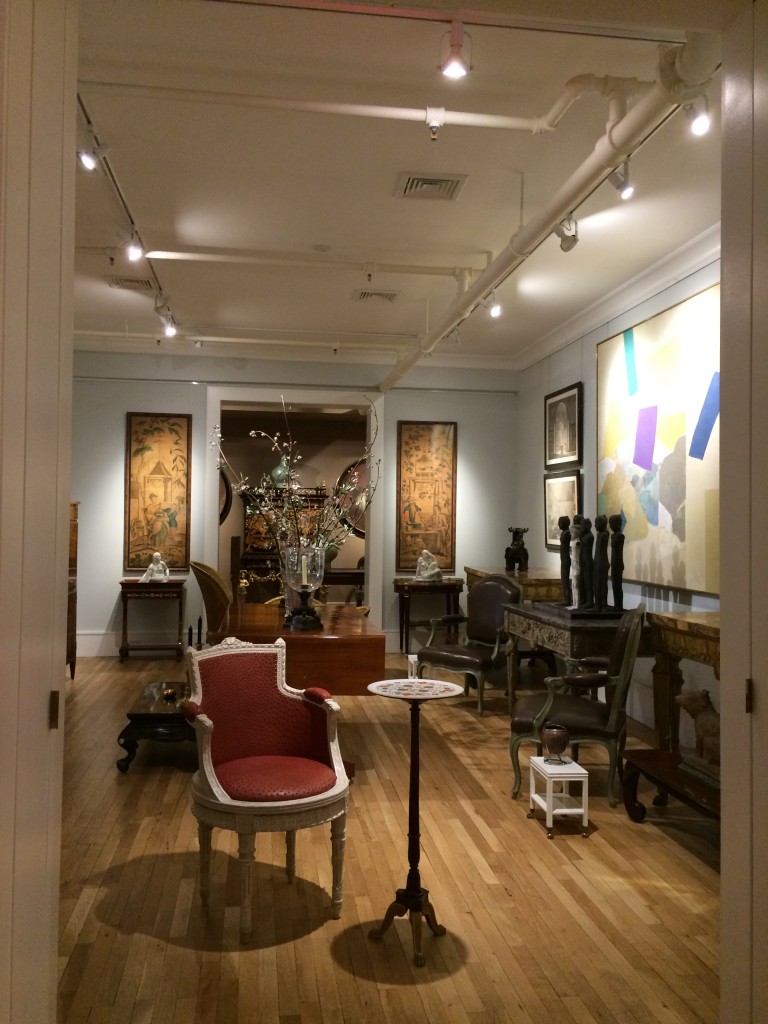
Interior of the new combined 59th street gallery. Photo courtesy of R. Louis Bofferding.
6. What are three important traits you look for when acquiring a piece of furniture?
I’ll give you five: “good, better, best, superior, masterpiece.” Those were the categories outlined by Albert Sack, an important dealer in American furniture, in his 1950 book that was the bible for dealers and collectors in the field. The categories apply just as well to antiquities and contemporary art. Making distinctions about quality is what connoisseurship is about, a process that many find elitist now. I say get over it.
7. What are three of your most exciting purchases as a dealer? And why ?
In an antiques shop in Atlanta I came across a pair of table-top-sized tree sculptures of coral and glass by Misia Sert. She was a Polish-born concert pianist, a muse of poets, composers, and painters like Satie, Marllarmé, and Bonnard, and later on Diaghilev and Coco Chanel. But when her third marriage broke up she started making these charming, jeweled trees. Anyway, I recognized them from a 1927 article in Art et Industrie, and have bought and sold many since.
There was also a fantastic Louis XVI giltwood sofa that I bought out of the rue du Cherche-Midi apartment of Andy Warhol’s right-hand-man Fred Hughes, who had one of the best eyes of his generation. It had once been in the collection of Baron Alexis de Redé, who had one of the best eyes of his.
But I’m most proud of having recently discovered a five-foot-tall mirror made by Venini in 1928. It came up unidentified in a New York auction, but I recognized it from an archival photo in Anna Venini’s book on her father’s work. Instinct told me it was designed by Ponti, and after months of research I found it was one of four made for his redesign of the rotunda of the Venice Biennale. It created quite a stir when I presented it — the New York Times did a story, and it has since appeared in a Venini book published by the new glass museum in Venice.
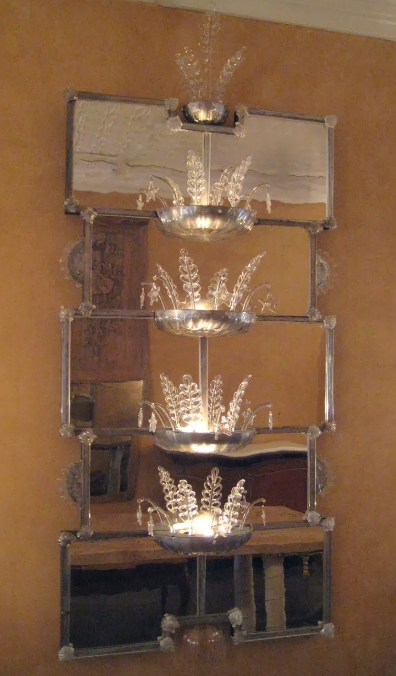
Gio Ponti Mirror produced by Venini for the Rotunda of the Venice Biennale.
Photo courtesy of R. Louis Bofferding.
![IMG_2038[7]](http://arte-case.com/wp-content/uploads/2015/11/IMG_20387-e1447966819818-1024x1024.jpg)
Interior of the new combined 59th street gallery. Photo courtesy of R. Louis Bofferding.
8. Which work have you been sorriest to part with? And why ?
When I first began I thought it would be difficult to part with the furniture I’d lived with. It wasn’t. That’s because I learned a hard lesson at the time of my opening. A friend, who should have been there, wasn’t because he had AIDS, and went back to Texas to die that week. That put everything into perspective. Things are just things, after all.
- Do you collect yourself?
Only books. I have a large research library, and I wouldn’t part with a single volume.
10. Can you share some exciting and enriching life experiences, (people you have met and places you have travelled to) that have resulted from your passion for decorative arts.
I’ve had mentors, like Pierre Le-Tan in Paris, who brings to collecting an artist’s eye and a connoisseur’s knowledge. Another was Garrick Stephenson, a patrician who became an antiques dealer in the ‘50s. I met him when I became one some years after he sold his inventory, and the furniture he lived with, to collect 20th-century design. I saw a lot of him, and stayed with him and his wife in Southampton and Palm Beach. His collection’s coming up at Christie’s in December in a single-owner sale, for which I wrote the catalog’s introduction.
As for places, I’ve never suffered from Stendhal Syndrome, but I’ve come close. The first time in the Philibert de l’Orme chape lon the grounds of the chateau of Anet that was built in the 16th century. It’s an architectural vortex, with swirling coffers in the dome that are reflected in the black-and-white marble flooring. The result is as unhinging as it is beautiful.
And then in Ravenna, a city that gleams with Byzantine gold mosaics, there’s a very simple one that brought me to tears. It shows a woman in a tower, waiving farewell to a crusader sailing to the Holy Land — a scene that’s reenacted whenever a soldier flies off to Afghanistan, or, less dramatically, when anyone leaves a loved one behind. The maker of this humble mosaic would have been of low stature, but his ability to communicate across the centuries to me elevates him to, if not above, the level of his contemporaries working in gold tesserae.

Interior of the new combined 59th street gallery. Photo courtesy of R. Louis Bofferding.
11. And finally, what do you see for the future for collectors and the decorative arts ?
In the last twenty years, collectors have sold their 18th and 19th century antiques to buy mid-century-modern and artist-designed furniture. But now that those collecting areas have become the status quo, the next generation of collectors will have to look elsewhere to make their mark. Maybe that’s why I’m finding young people less doctrinaire in approach than their parents, and more wide-ranging in their interests. And there, in my opinion, lies the hope for the future.
Visit bofferdingnewyork.com or better yet visit the gallery in NY: Louis Bofferding Decorative & Fine Art, 232 East 59th Street, New York
Architectural Digest’s Mitchell Owen’s wrote an article on this new combined gallery here.
Join our mailing list to receive our blog posts and regular art and design updates from Paris and beyond!
Collecting Design Begins in Paris. Come Find your Inspiration!

